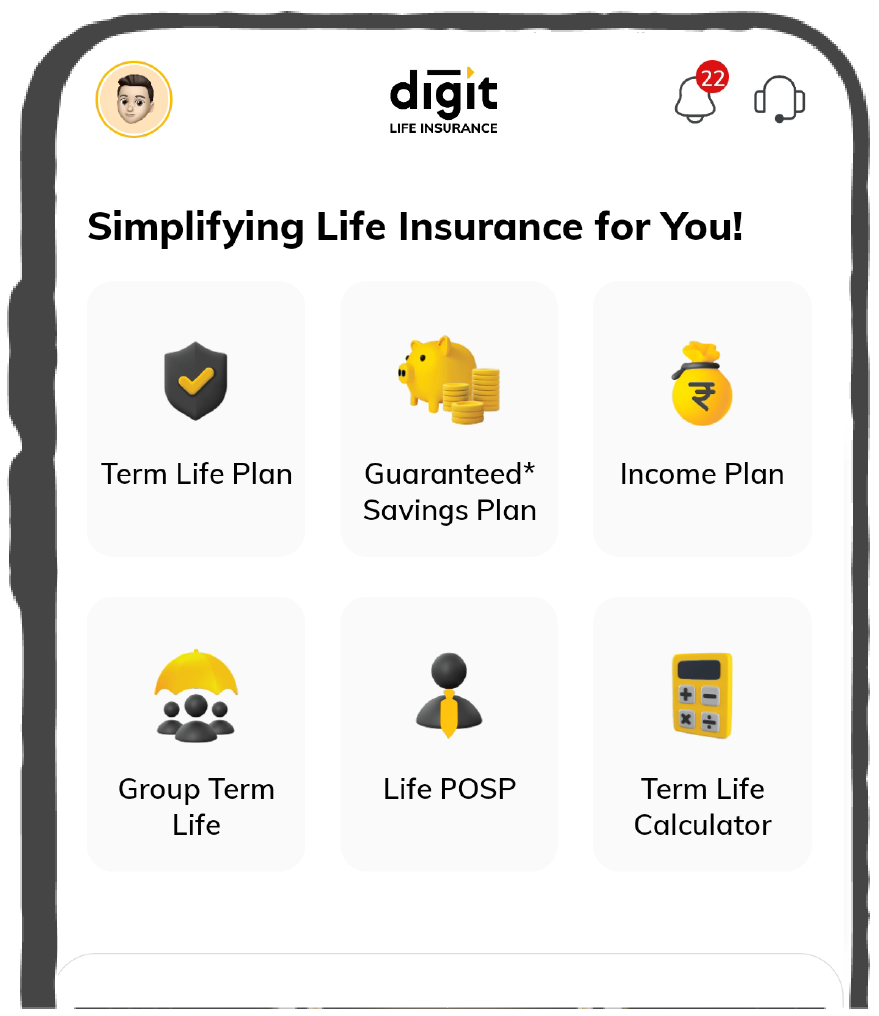What Should Be the Duration of Term Insurance Plan?

Term insurance policies are standard life insurance policies that offer life coverage for a fixed duration or ‘term’ stated by a policyholder at the time of purchase. However, one crucial question that often arises is: What should be a term insurance plan?
Choosing the right term length is vital because it determines how long your family will have financial security. If the duration is too short, the policy might expire before your financial obligations are covered. If it is too long, you may end up paying higher premiums than necessary.
This article will explain everything you need to know about selecting the right duration for a term insurance plan and the factors you must remember while choosing insurance tenure.

Table of Contents

What is Term Insurance Policy Duration?
Term insurance is a pure protection plan that provides coverage for a fixed period. If the policyholder passes away within this period, the beneficiaries receive the sum assured. However, if the policyholder survives the term, no benefits are paid unless it’s a return-of-premium plan.
The duration of a term insurance plan can range from 5 years to 40 years, depending on your unique financial situation, family needs, and long-term goals, or up to a specific age, such as 60 or 75. The ideal duration depends.
How to Calculate the Ideal Duration for Term Insurance?
A simple formula to determine the right term duration is:
Retirement Age - Current Age = Ideal Term Duration
For example, if you are 30 years old and plan to retire at 60, your ideal term duration should be 30 years. Alternatively, you can assess major financial responsibilities and choose a term to cover them.
While longer terms have higher monthly costs, they typically offer better lifetime value by locking in rates based on your current age and health status.
You May Also Like to Read This:
Ideal Duration of Term Insurance Policy for Different Life Stages
When choosing a term insurance policy, it's important to understand the common term durations and their suitability for different needs. Here are some typical term duration and their ideal applications:
Factors to Consider When Choosing the Ideal Duration of a Term Insurance Plan
The following are the crucial factors one must remember at the time of choosing the duration of a term life insurance plan:
Mortgage Needs
If you have a home loan, pick a life insurance policy term that matches how long you will be paying it off. For instance, if it’s a 20-year mortgage, choose a 20-year life insurance policy. This way, your family can pay off the mortgage if you are not around.
Education Costs
If you have young kids, think about how many years it will be until they finish their education. Your life insurance should ideally last until then, ensuring their education is taken care of even if you can’t provide for them.
Other Debts
Consider any other long-term debts you have. Your life insurance policy should cover you until these debts are cleared.
For Young Professionals
If you are in your 20s or early 30s, you might want a longer insurance term, like 30-40 years. This will help protect your family while you build up your savings and assets.
For Middle-Aged Individuals
If you are in your 40s or 50s, a term of 15-25 years could work for you, based on your financial goals and remaining debts.
For Those Near Retirement
If you are close to retirement, a shorter term might be best. Focus on covering any last debts and ensuring a smooth transition into retirement.
Single Parents
A single parent might choose coverage until their youngest child reaches age 25 to ensure complete educational support.
Assessing Your Finances
Take a look at your current income and future expenses. Make sure the insurance term is long enough to cover your family until you have enough savings to support them if something happens to you.
Those with Special Needs Dependents
Parents of a child with lifelong care needs might choose a convertible term policy that can later become permanent insurance.
Using a Calculator
Consider using a term insurance calculator to figure out how much coverage you need based on your income and expenses.
Planning for Retirement
Your life insurance policy should last until you retire, as your dependents might not need your income anymore by then. If you plan to retire at 60, ensure your policy covers you until then. If you still have dependents who will need support after retirement, think about extending the term.
How to Choose the Term Insurance Duration Based on Age?
Choosing the right insurance policy based on your age is crucial as your needs and priorities change over time. Here are some guidelines to help you make an informed decision:
In Your 20s
If you are in your 20s, it’s a good idea to choose a plan that lasts at least 40 years or goes up to age 99. Since premiums are usually lower when you are younger, you can take advantage of this and avoid needing to renew your policy later.
In Your 30s
Like in your 20s, a 40-year term or coverage until age 99 is still a great choice. Adjust the length of coverage based on your financial responsibilities and when you plan to retire.
In Your 40s
Your financial responsibilities might be less at this stage, so you can select a 40-year policy that covers you until you are 80. If it’s your first policy, remember that your premiums might be higher than in your 20s or 30s.
In Your 50s
Now that you are in your 50s and your kids may have moved out, a policy term of about 25 years should be enough. However, you can go for a longer term, like 35 years, or choose to be covered until age 99 if that fits your needs better.
Benefits of Opting for a Longer Term Insurance Duration
Common Mistakes to Avoid When Choosing Term Policy Duration
Choosing the right term duration for your insurance policy is crucial, but there are some common mistakes people often make. Here are a few to watch out for:
Selecting a Shorter Term to Save on Premiums
Many people choose a shorter duration to pay lower premiums. However, if the policy expires and you still need coverage, renewing a policy at an older age can be very expensive or even impossible due to health issues.
Overextending the Term Beyond Necessity
While having a long-term plan provides peace of mind if your financial dependents become independent and you have no major liabilities, paying extra for a longer term may not be necessary.
Not Accounting for Life Expectancy Increases
Modern medicine continues to extend life expectancies. A policy that ends at age 65 might leave you with 20+ years of retirement without coverage. Consider how long your dependents might need financial support.
Forgetting About Inflation
The coverage amount you select today may not have the same purchasing power in 20-30 years. Some policies offer inflation riders, or you might need to adjust coverage periodically.
Ignoring Convertibility Options
Many term policies allow conversion to permanent life insurance. A term with strong convertibility options provides flexibility if your health deteriorates but you still need coverage beyond the term.
Choosing the duration of term insurance is an important task when opting for the policy and it depends on your circumstances and financial goals. Shorter terms are ideal for those nearing retirement with minimal liabilities. 20-25 years term suit middle-aged individuals with children or existing loans.
Longer terms are best for young professionals starting their careers and families. Assess your needs and choose a term that aligns with your life stage and financial responsibilities, focusing on your retirement age.
FAQs about Duration of a Term Insurance Plan
Can the tenure of term insurance be extended?
What are the tips for choosing a term insurance plan?
Mentioned below are the top five steps on how to choose the best term insurance plan for you:
- Focus on your dependents
- Consider your prevailing lifestyle
- Analyse your income
- Determine the existing liabilities
- Verify the claim settlement ratio of the insurer
What is the ideal duration for term insurance?
What happens if my term insurance expires before I die?
Is it better to choose a term plan up to 60 or 75 years?
What factors determine the term duration?
What is the shortest term for term insurance?
Can I buy multiple term insurance plans with different durations?
How does my age affect the duration of my term insurance?
Is a return-of-premium term plan a good option for longer durations?
Can we take term insurance for 10 years?
What happens after 20 years of term life insurance?
Does term insurance duration affect premium costs?
How does my financial situation impact my term duration?
Is there a recommended tenure if I'm looking to purchase a ₹1 crore term plan?
Is there a recommended tenure if I want comprehensive health insurance coverage?
Other Important Term Insurance Guides
Other Important Articles Related to Term Insurance
Latest News
Read More










